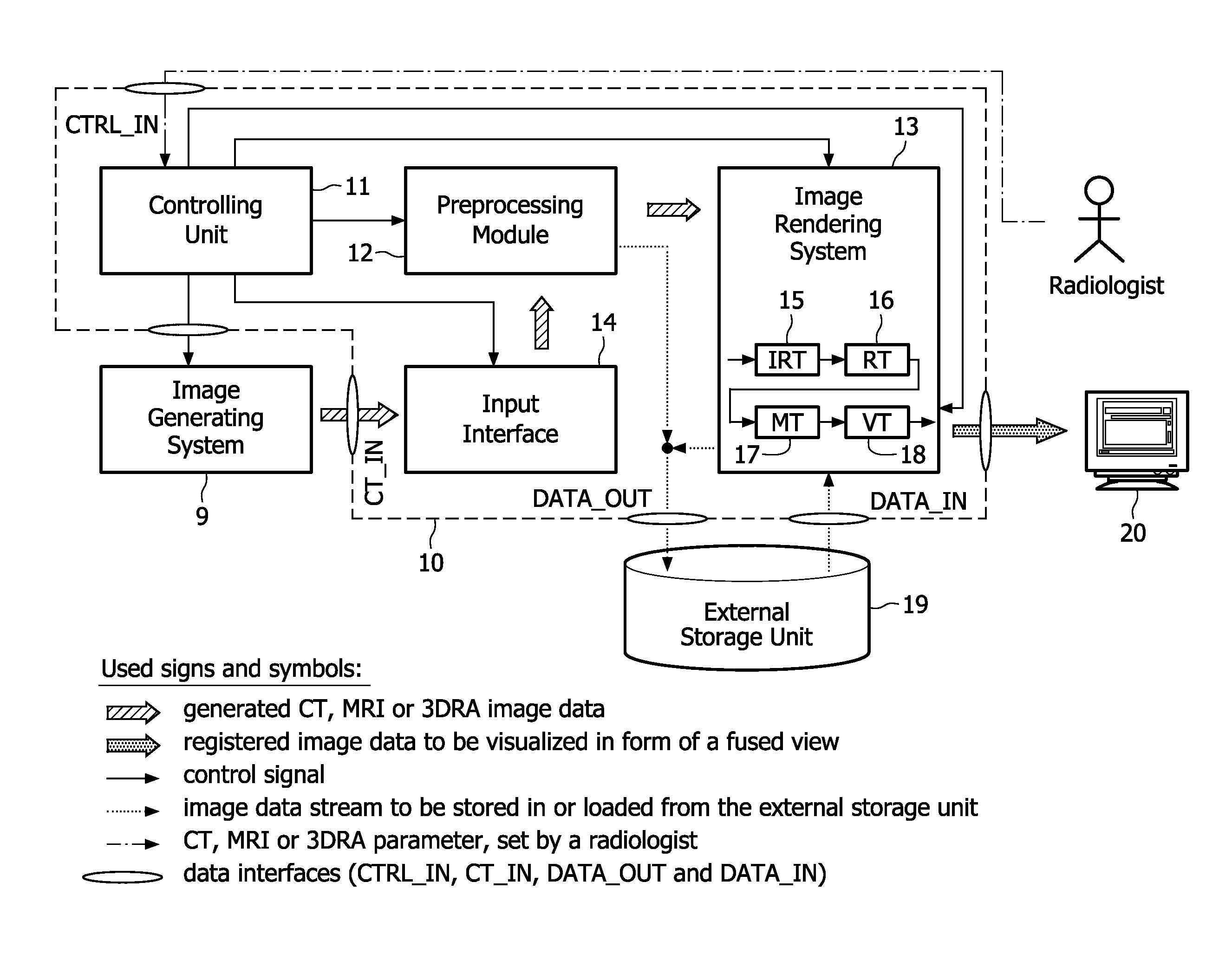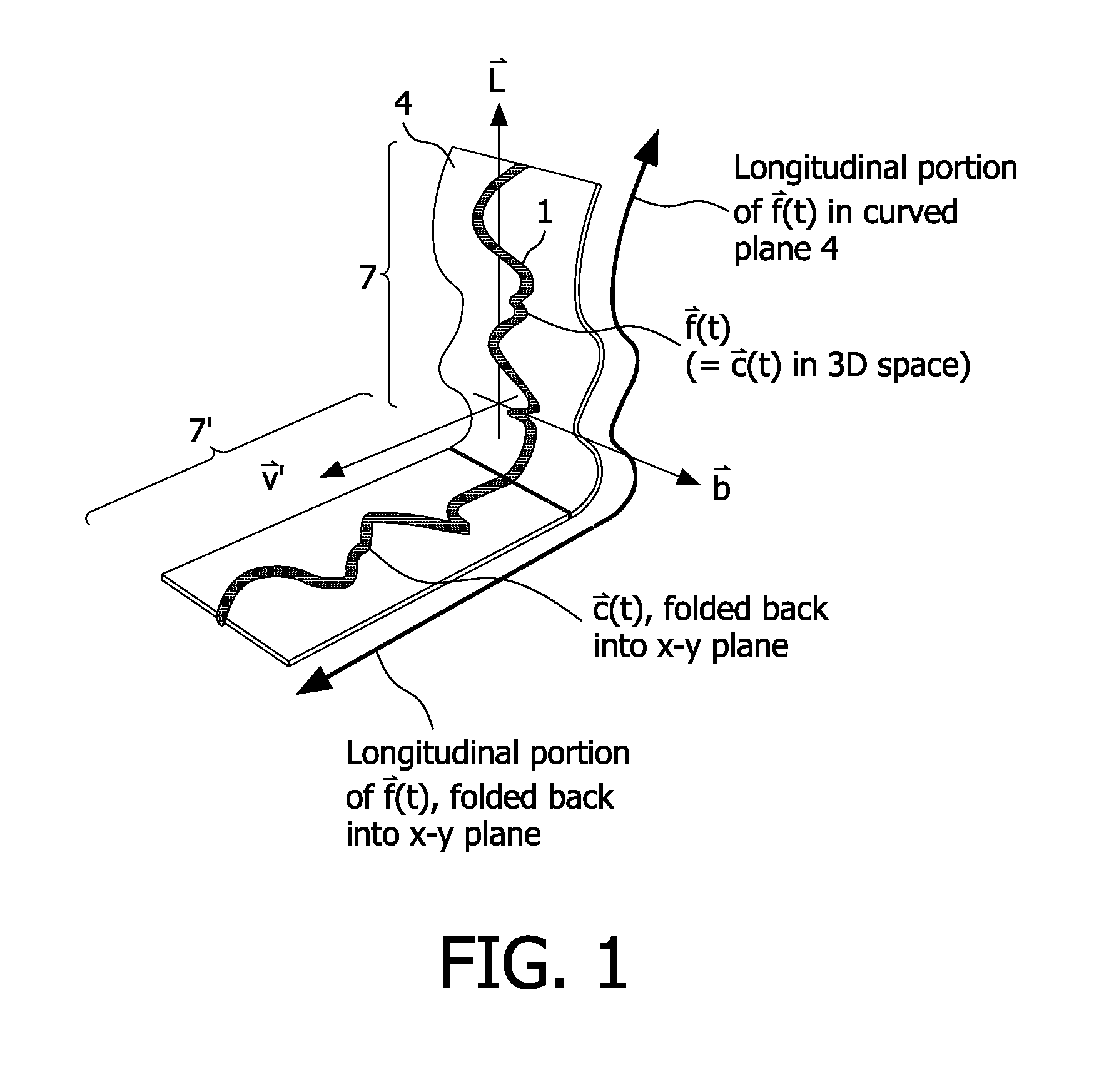Coupling the viewing direction of a blood vessel's CPR view with the viewing angle on the 3D tubular structure's rendered voxel volume and/or with the C-arm geometry of a 3D rotational angiography device's C-arm system
a technology of c-arm and cpr, which is applied in the direction of 3d-image rendering, instruments, computing, etc., can solve the problems of patient exposure to potentially harmful contrast agents and patient and staff exposure to x-ray radiation dose, and achieve the effect of facilitating accurate measurements of the vessel
- Summary
- Abstract
- Description
- Claims
- Application Information
AI Technical Summary
Benefits of technology
Problems solved by technology
Method used
Image
Examples
Embodiment Construction
[0035]In the following, the CPR-based visualization method according to an exemplary embodiment of the present invention will be explained in more detail with respect to special refinements and referring to the accompanying drawings. Thereby, a blood vessel's 3D tubular structure 1 that has been segmented from an acquired CT or MR image by means of a segmentation algorithm, said 3D tubular structure being sufficiently described by a curvilinear central axis, shall be assumed as being an anatomical object to be graphically visualized.
[0036]When defining the path of said blood vessel's 3D tubular structure's central axis by {right arrow over (x)}={right arrow over (f)}(t), whereby {right arrow over (x)} denotes the Cartesian position vector of a 3D position P(x, y, z) in a three-dimensional Cartesian coordinate system of an Euclidian vector space V=3 and t is a real-valued scalar parameter ranging from 0 to 1, the normalized longitudinal vector {right arrow over (l)} of the central ax...
PUM
 Login to View More
Login to View More Abstract
Description
Claims
Application Information
 Login to View More
Login to View More - R&D
- Intellectual Property
- Life Sciences
- Materials
- Tech Scout
- Unparalleled Data Quality
- Higher Quality Content
- 60% Fewer Hallucinations
Browse by: Latest US Patents, China's latest patents, Technical Efficacy Thesaurus, Application Domain, Technology Topic, Popular Technical Reports.
© 2025 PatSnap. All rights reserved.Legal|Privacy policy|Modern Slavery Act Transparency Statement|Sitemap|About US| Contact US: help@patsnap.com



